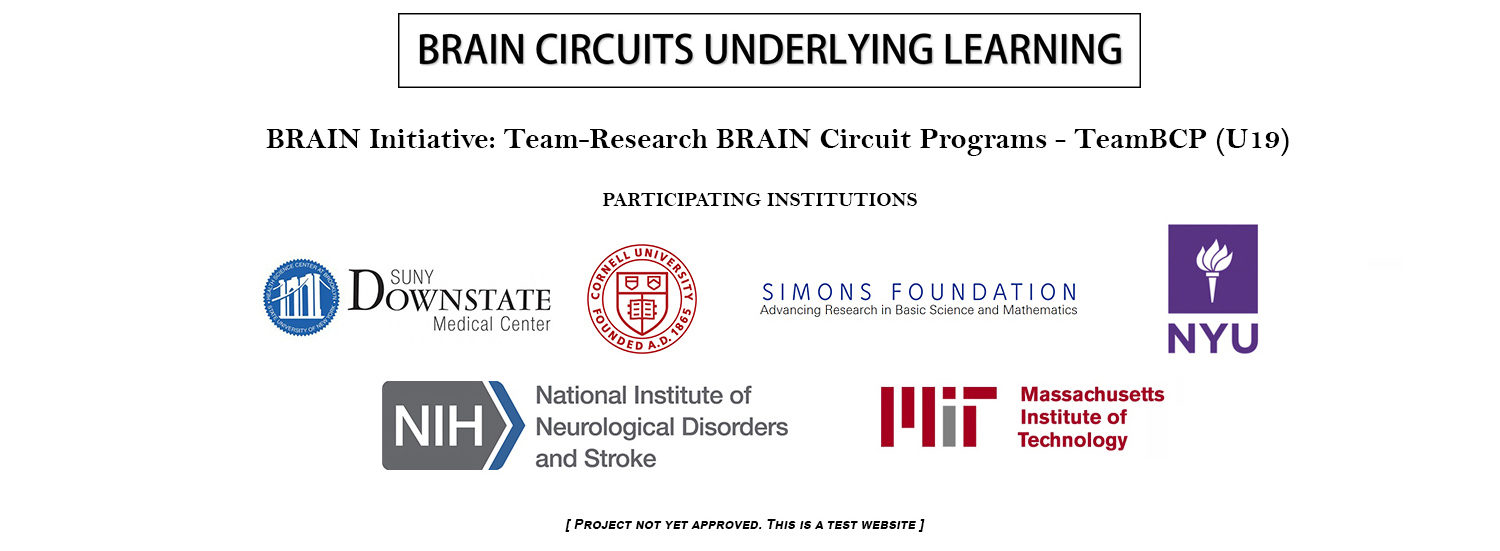We propose to determine the neural circuit changes that occur in the brain as a function of perceptual learning, and to construct precise mathematical models of the circuit mechanisms. We will causally test our models with optogenetics in awake monkeys. The mechanisms by which brain circuits learn is one of the central questions of neuroscience. Despite outstanding progress, the field has not answered several central questions related to how learned information is encoded by circuits. These gaps in knowledge have hindered our understanding of the circuit mechanisms underlying learning. Specifically, the changes in neurons that take place longitudinally—as circuits rewire to achieve expertise—are unknown. To address these gaps, we have designed a new para-digm in which both human and monkey novices will learn a basic perceptual task in which every person or mon-key can achieve expertise, with practice. Our innovative approach is to create a model of the circuit changes underlying perceptual learning at multiple scales (including behavioral, whole brain imaging, and circuit levels), to determine the specific physiologic and metabolic mechanistic pathways involved. This approach is tractable, and a necessary first step in framing the neurobiology of learning. We will utilize novel approaches and technol-ogies—in combinations that are innovative yet grounded in established methodology. We will build computational theories and test them optogenetically to drive optimized artificially-induced learning. These causal tests will thus drive neural circuits in the same way as behavioral learning tasks, to determine if artificial prosthetic training leads to the same behavioral, physiological, anatomical, and vascular changes found in real training. We expect that they will and if so, we will have causally established the circuit basis of learning. This will provide specific predictions about expertise acquisition and maintenance, neural disability, and rehabilitation. Our project will expand the field’s reach through its paradigmatic innovation of focusing a wide array of behavioral, anatomical, and physiological measures on a single focused behavior in identified cells of a single animal, while remaining feasible in every facet. The data will also answer a long-asked question in human cognition: whether circuits continue to change during continued training, even after expertise is achieved, or whether there are different circuit mechanisms for perceptual learning acquisition, which, once achieved, leads to the permanent cementing of true expertise after with continued training. Our approach will incorporate multiscale methodological advances in computation, fMRI, psychophysics, optogenetics, laminar multi-unit electrophysiology, two-photon calcium im-aging of 100,000’s of neurons simultaneously in visual cortex, and advanced microscopy and analysis of neural and vascular morphology, and blood flow recordings. When analyzed in combination, these data will allow us to understand the interactions between a wide array of processing levels in the brain during expertise formation. The results will be critical to developing and testing novel drug and prosthetic therapies to enhance human learning and rehabilitation that provide strategies to overcome learning disability.
Konrad Körding [ Co-I – Project 3 ]

